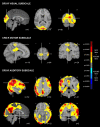Importance, limits and caveats of the use of "disorders of consciousness" to theorize consciousness
- PMID: 35369675
- PMCID: PMC8966966
- DOI: 10.1093/nc/niab048
Importance, limits and caveats of the use of "disorders of consciousness" to theorize consciousness
Abstract
The clinical and fundamental exploration of patients suffering from disorders of consciousness (DoC) is commonly used by researchers both to test some of their key theoretical predictions and to serve as a unique source of empirical knowledge about possible dissociations between consciousness and cognitive and/or neural processes. For instance, the existence of states of vigilance free of any self-reportable subjective experience [e.g. "vegetative state (VS)" and "complex partial epileptic seizure"] originated from DoC and acted as a cornerstone for all theories by dissociating two concepts that were commonly equated and confused: vigilance and conscious state. In the present article, we first expose briefly the major achievements in the exploration and understanding of DoC. We then propose a synthetic taxonomy of DoC, and we finally highlight some current limits, caveats and questions that have to be addressed when using DoC to theorize consciousness. In particular, we show (i) that a purely behavioral approach of DoC is insufficient to characterize the conscious state of patients; (ii) that the comparison between patients in a minimally conscious state (MCS) and patients in a VS [also coined as unresponsive wakefulness syndrome (UWS)] does not correspond to a pure and minimal contrast between unconscious and conscious states and (iii) we emphasize, in the light of original resting-state positron emission tomography data, that behavioral MCS captures an important but misnamed clinical condition that rather corresponds to a cortically mediated state and that MCS does not necessarily imply the preservation of a conscious state.
Keywords: disorders of consciousness; electroencephalography; minimally conscious state; positron emission tomography; vegetative state.
© The Author(s) 2021. Published by Oxford University Press.
Figures
Similar articles
-
Measures of metabolism and complexity in the brain of patients with disorders of consciousness.Neuroimage Clin. 2017 Feb 6;14:354-362. doi: 10.1016/j.nicl.2017.02.002. eCollection 2017. Neuroimage Clin. 2017. PMID: 28239544 Free PMC article.
-
Diagnostic Developments in Differentiating Unresponsive Wakefulness Syndrome and the Minimally Conscious State.Front Neurol. 2022 Jan 13;12:778951. doi: 10.3389/fneur.2021.778951. eCollection 2021. Front Neurol. 2022. PMID: 35095725 Free PMC article. Review.
-
Wisdom of the caregivers: pooling individual subjective reports to diagnose states of consciousness in brain-injured patients, a monocentric prospective study.BMJ Open. 2019 Feb 21;9(2):e026211. doi: 10.1136/bmjopen-2018-026211. BMJ Open. 2019. PMID: 30792234 Free PMC article.
-
Self-processing in coma, unresponsive wakefulness syndrome and minimally conscious state.Front Hum Neurosci. 2023 Apr 12;17:1145253. doi: 10.3389/fnhum.2023.1145253. eCollection 2023. Front Hum Neurosci. 2023. PMID: 37125347 Free PMC article.
-
EEG-based Brain-Computer Interfaces for people with Disorders of Consciousness: Features and applications. A systematic review.Front Hum Neurosci. 2022 Dec 5;16:1040816. doi: 10.3389/fnhum.2022.1040816. eCollection 2022. Front Hum Neurosci. 2022. PMID: 36545350 Free PMC article.
Cited by
-
Covert consciousness.NeuroRehabilitation. 2024;54(1):23-42. doi: 10.3233/NRE-230123. NeuroRehabilitation. 2024. PMID: 38217619 Free PMC article.
-
Covert cortical processing: a diagnosis in search of a definition.Neurosci Conscious. 2024 Feb 7;2024(1):niad026. doi: 10.1093/nc/niad026. eCollection 2024. Neurosci Conscious. 2024. PMID: 38327828 Free PMC article.
-
Brain-heart interactions in the neurobiology of consciousness.Curr Res Neurobiol. 2022 Aug 6;3:100050. doi: 10.1016/j.crneur.2022.100050. eCollection 2022. Curr Res Neurobiol. 2022. PMID: 36685762 Free PMC article. Review.
-
Content-state dimensions characterize different types of neuronal markers of consciousness.Neurosci Conscious. 2024 Jul 12;2024(1):niae027. doi: 10.1093/nc/niae027. eCollection 2024. Neurosci Conscious. 2024. PMID: 39011546 Free PMC article.
-
Probing Intrinsic Neural Timescales in EEG with an Information-Theory Inspired Approach: Permutation Entropy Time Delay Estimation (PE-TD).Entropy (Basel). 2023 Jul 19;25(7):1086. doi: 10.3390/e25071086. Entropy (Basel). 2023. PMID: 37510033 Free PMC article.
References
-
- Aricò I, Naro A, Pisani LR et al. Could combined sleep and pain evaluation be useful in the diagnosis of disorders of consciousness (DOC)? Preliminary findings. Brain Inj 2016;30:159–63. - PubMed
-
- Arnaldi D, Terzaghi M, Cremascoli R et al. The prognostic value of sleep patterns in disorders of consciousness in the sub-acute phase. Clin Neurophysiol 2016;127:1445–51. - PubMed
-
- Arzi A, Rozenkrantz L, Gorodisky L et al. Olfactory sniffing signals consciousness in unresponsive patients with brain injuries. Nature 2020;581:428–33. - PubMed
-
- Bauer G, Gerstenbrand F, Rumpl E Varieties of the locked-in syndrome. J Neurol 1979;221:77–91. - PubMed
Publication types
LinkOut - more resources
Full Text Sources




